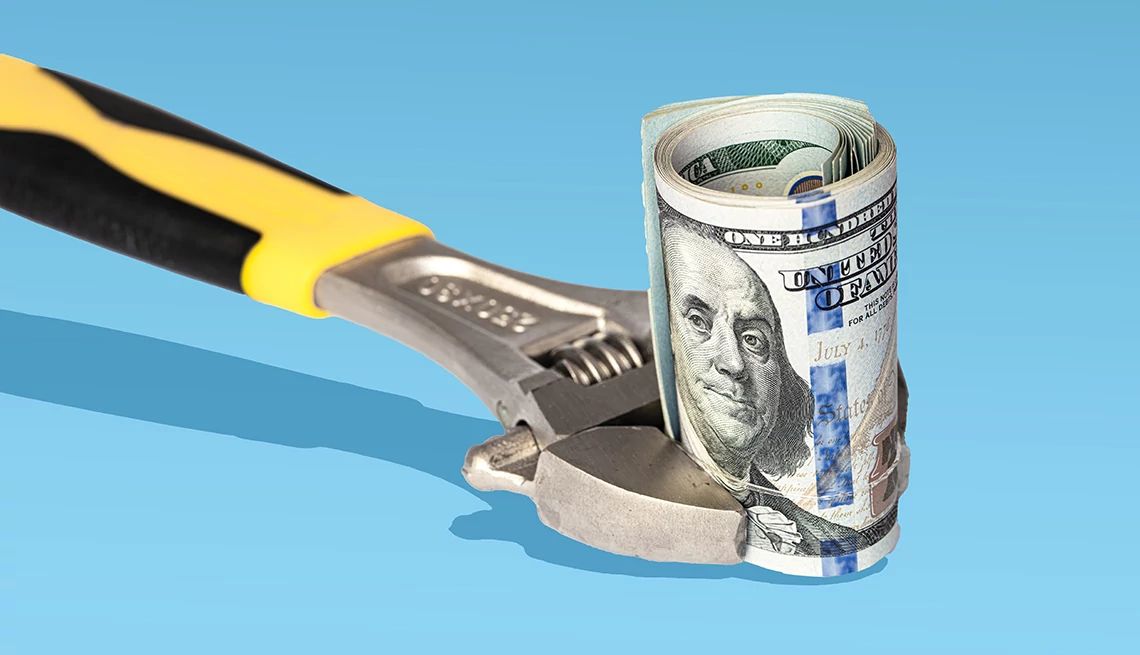Staying Fit


Navigating retirement can be overwhelming given uncertainties like market volatility, inflation, life expectancy and the state of Social Security. Like having a mechanic give your car a periodic once-over, regularly reviewing your spending and saving can help keep your financial motor running smoothly, ensuring you maintain healthy cash flow, adapt to changes in the economic landscape and stay on track toward your retirement goals.
If you feel like your economic engine is starting to sputter, or you just haven’t looked under the hood in a while, it may be time to tune up your retirement finances. Here’s your check-up checklist.


AARP Membership— $12 for your first year when you sign up for Automatic Renewal
Get instant access to members-only products and hundreds of discounts, a free second membership, and a subscription to AARP the Magazine.
1. Update your budget
The first step is to dust off that budget spreadsheet and give it a makeover.
Remember that budgeting isn’t just about tracking what you spend. Income is an important element, too. Did you recently pick up a part-time job to keep busy? How did the latest Social Security cost-of-living adjustment (COLA) affect your benefit? Including all income sources in your budget gives you a realistic picture of what you’re working with.
Next, update your budget with current and upcoming expenses. Not just your regular bills like groceries and utilities — factor in things like discretionary spending (on entertainment and eating out, for example), health care costs (which tend to rise as you age), estimated taxes, and any planned travel or home improvements. Aaron Cirksena, founder and CEO of MDRN Capital in Annapolis, Maryland, recommends making room in your budget for an emergency fund (or starting one if you haven’t already). Building a rainy-day cushion into your budget puts you in a better position to handle unexpected home or health costs or absorb economic shocks like an inflation spurt.
Now, compare your expenses to your income. If you’re spending more than you bring in, consider some of these measures to cut costs:
- Reduce discretionary spending.
- Cancel streaming services or other subscriptions you don’t use much.
- Downsize your home.
- Move to a cheaper area.
- Buy bulk or generic items at the grocery store.
- Look for retailers and venues that offer discounts for older customers.
- Comparison-shop for insurance. You may find lower premiums for health, home or auto policies (but make sure you’re still getting the level of coverage you need).
2. Declutter your financial records
Getting control of your finances can be challenging without a reliable organizational system. Gather up loose bills, account statements and other paperwork into one spot, and do the same for digital files on your computer. Identify which documents to keep and which to shred or delete.
According to the Financial Industry Regulatory Authority (FINRA), this is how long you’ll want to retain various financial documents:
- Tax records: 7 years (this includes any records from the categories below that you use in preparing your tax return)
- Property records: 6 years after selling your home
- Mortgages and other loans: Indefinitely
- Bank records: One year for checks and account statements
- Pay stubs: Until you get your W-2 form (so you can verify it has the correct amount)
- Credit card receipts and statements: FINRA says to keep receipts until you can check them against your monthly statements, then shred both (unless they reflect purchases you plan to claim as tax deductions). However, other sources such as Bank of America recommend keeping credit card statements for a year.
- Brokerage statements: 7 years
- Utility bills: As soon as the payment clears




































































More From AARP
As You Age, Is It Time to Rethink Your Bucket List?
For National Bucket List Day, here’s how to take stock of your life goals
Top 5 States Where Retirees Are Moving
South Carolina gained on Florida as retirement relocations took a big jump in 20236 Things I Wish Someone Had Told Me Before I Retired
Recent retiree shares lessons learned about money, time
Recommended for You